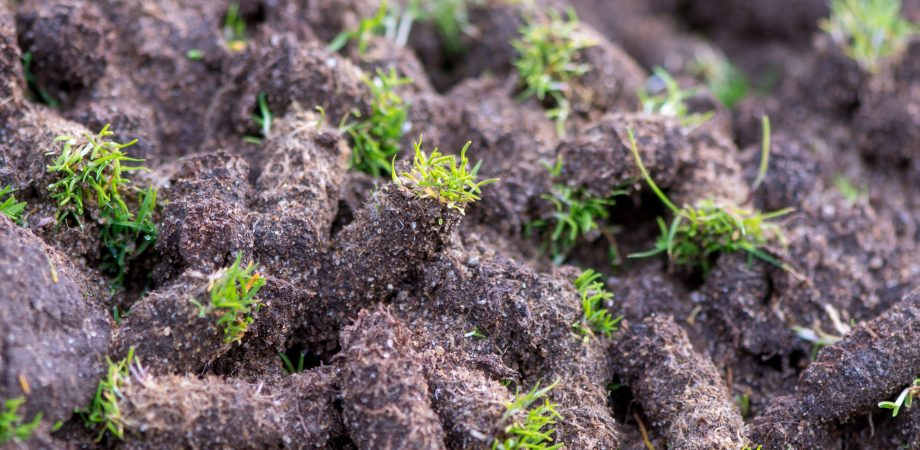Aeration Tricks of the Trade

Before working in sales, I was a superintendent for about 20 years. I would like to share some tricks of the trade I learned through the years. Each one of these particular “tricks” is related to aeration.
As many people know, aerating fairways is a lengthy process—especially when using open spoon tines. Breaking up the cores and removing the tufts is very time-consuming. What can make matters worse is aerating fairways that have heavy soils. Attempting to break up the clay soil cores is challenging. Once the clay cores dry, they can be as hard as cement! A good trick to help the process is to turn the open spoon tines toward the machine. By doing this, it actually throws the cores back toward the machine, pulverizing the clay soil into a smaller, more manageable size for clean-up.
Another trick of the trade is what to do with all the aeration cores after aerating your greens. Why not build a nursery green? Locate that “out of the way” area on your course. Prep the area, making sure you have at least a couple of inches of good soil and access to irrigation. Dump and spread the cores you collected from your aerated greens throughout the area. Try to keep them as level as possible by using a landscape rake. Using a roller for the final step would help tremendously. Eventually, after fertilizing and maintaining the cores, you will produce a well-established nursery with the type of grass maintained on your golf course greens. This can be very helpful when repairs are needed for a damaged green. It will be a perfect match!
Another trick of the trade when it comes to aeration cores has to do with installing drainage lines in your well-established fairways. After the installation of the drain lines, you’ll want to make sure the end results match the type of turf that exist on your fairways. In other words, if you have an annual bluegrass and bentgrass mixed fairway, you would not want to sod over your drain lines with Kentucky bluegrass. It would stand out like a sore thumb! To avoid that, many superintendents use a sod cutter and cut out the existing sod where the drain lines are to be installed. They will roll it up and put it off to the side to be replaced after the drainage installation. This procedure, though very successful, is labor intense. Instead, you can follow a quicker process. After your drain line is installed and you have backfilled your drain line using either pea gravel or a sand/soil mix, leave the top inch or so open. Then, use an aerator with hollow tines and aerate on each side of that drain line. Use the back side of a landscape rake and push the aeration cores into that top layer of your drain line. Those cores will eventually grow and match exactly the type of turf you have on your existing fairways.
I hope these tricks of the trade help you with your future aeration, nursery, and drainage projects!
Joe Singles
Sales Representative







